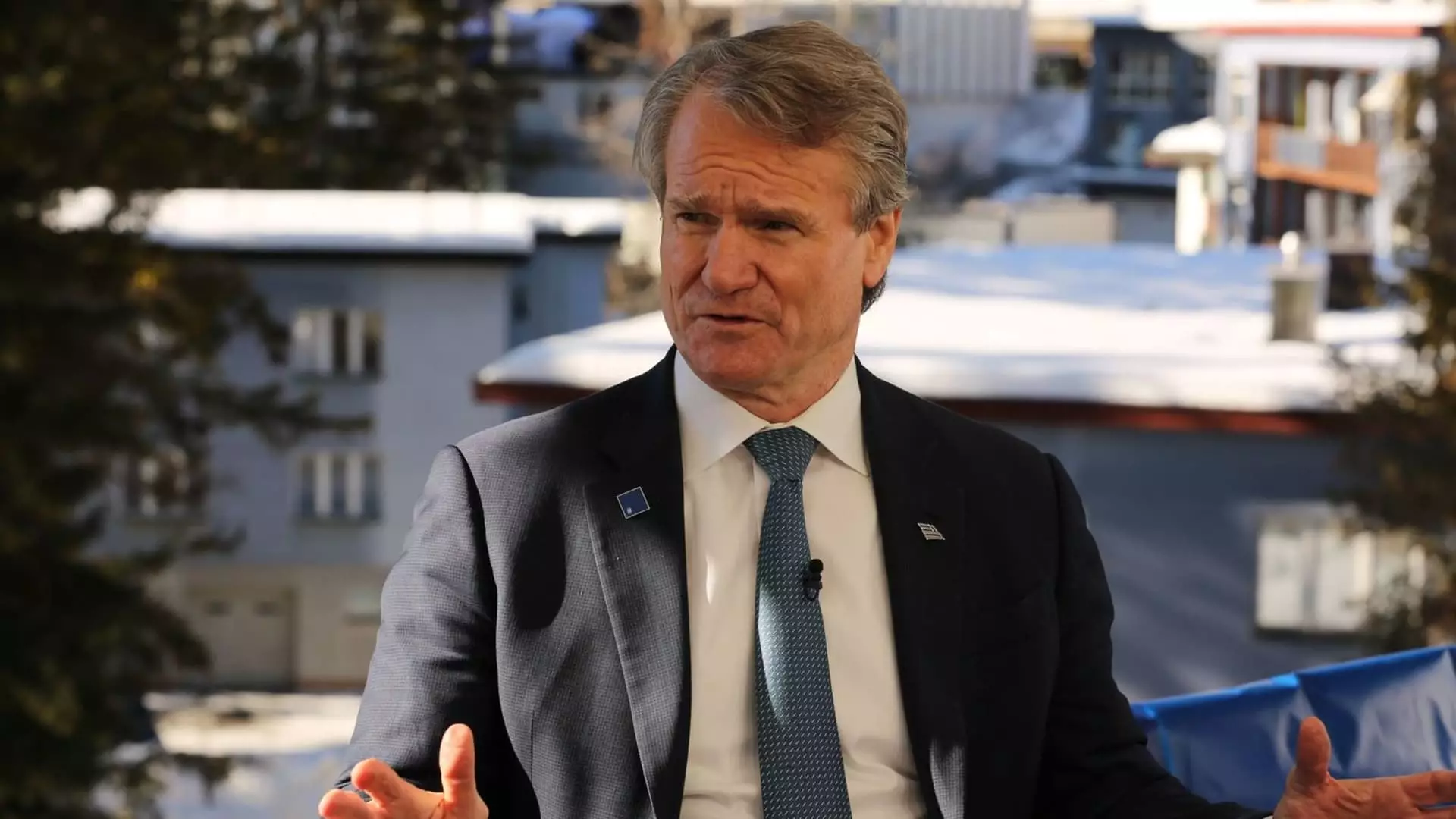In a recent address, Bank of America’s CEO Brian Moynihan highlighted critical shifts in consumer spending trends, suggesting that this may influence the Federal Reserve’s approach to interest rates moving forward. As the economy grapples with rising prices and sustained demand, these insights provide a key viewpoint into the economic landscape and the policies that may follow.
Moynihan pointed out that retail spending among Bank of America’s customer base has soared by nearly 6% in early 2024 when compared to the same timeframe in the previous year. This uptick signifies a robust consumer mindset, contrasting with more cautious attitudes seen in preceding quarters. Such heightened consumer activity can often contribute to inflationary pressures, presenting a compelling rationale for the Fed to maintain its current benchmark interest rates rather than embarking on further cuts.
The improvement in spending patterns, especially given the context of higher interest rates prevalent since 2020, indicates a resilient consumer base that remains undeterred by ongoing inflation concerns. This resilience is crucial, particularly when considered against the backdrop of previous economic downturns, wherein consumer spending typically falters.
The most recent figures from the Bureau of Labor Statistics illustrate an unanticipated increase in the consumer price index, a situation that has caused financial markets to reassess their expectations regarding rate adjustments. Since initiating a cycle of monetary easing in September 2023, the Fed has been cautious, opting to keep rates stable at 4.25%-4.5%. Moynihan’s remarks reflect an essential understanding of how inflation continues to complicate the Fed’s monetary policy framework.
While current rates are considered restrictive, the prevailing inflation levels create a environment in which significant rate cuts are not feasible. Moynihan has underscored this duality, expressing that the Fed’s easing may only occur when there is substantial progress toward curbing inflation—an achievement that seems distant given current conditions.
For various stakeholders, including consumers, businesses, and investors, the influence of consumer spending trends on interest rate policies remains profound. Should consumer spending sustain its upward trajectory, we could expect policy-makers to remain apprehensive about slashing rates, boosting liquidity into the economy without further inflating prices.
Bank of America’s analysts maintain a cautious outlook, forecasting that rate reductions are unlikely in the immediate term due to persistent inflationary pressures. This aligns with the broader economic sentiment that suggests a careful balancing act is required to nurture consumer growth without triggering undue inflation.
Moynihan’s insights underscore the complexities of consumer behavior amid economic pressures, illuminating the challenging path the Federal Reserve must navigate. The interplay between robust consumer spending and inflation presents crucial implications for monetary policy, where any missteps could have widespread repercussions on the broader economy. As we move forward, the balance between encouraging spending while controlling inflation will be pivotal in shaping future economic narratives.

